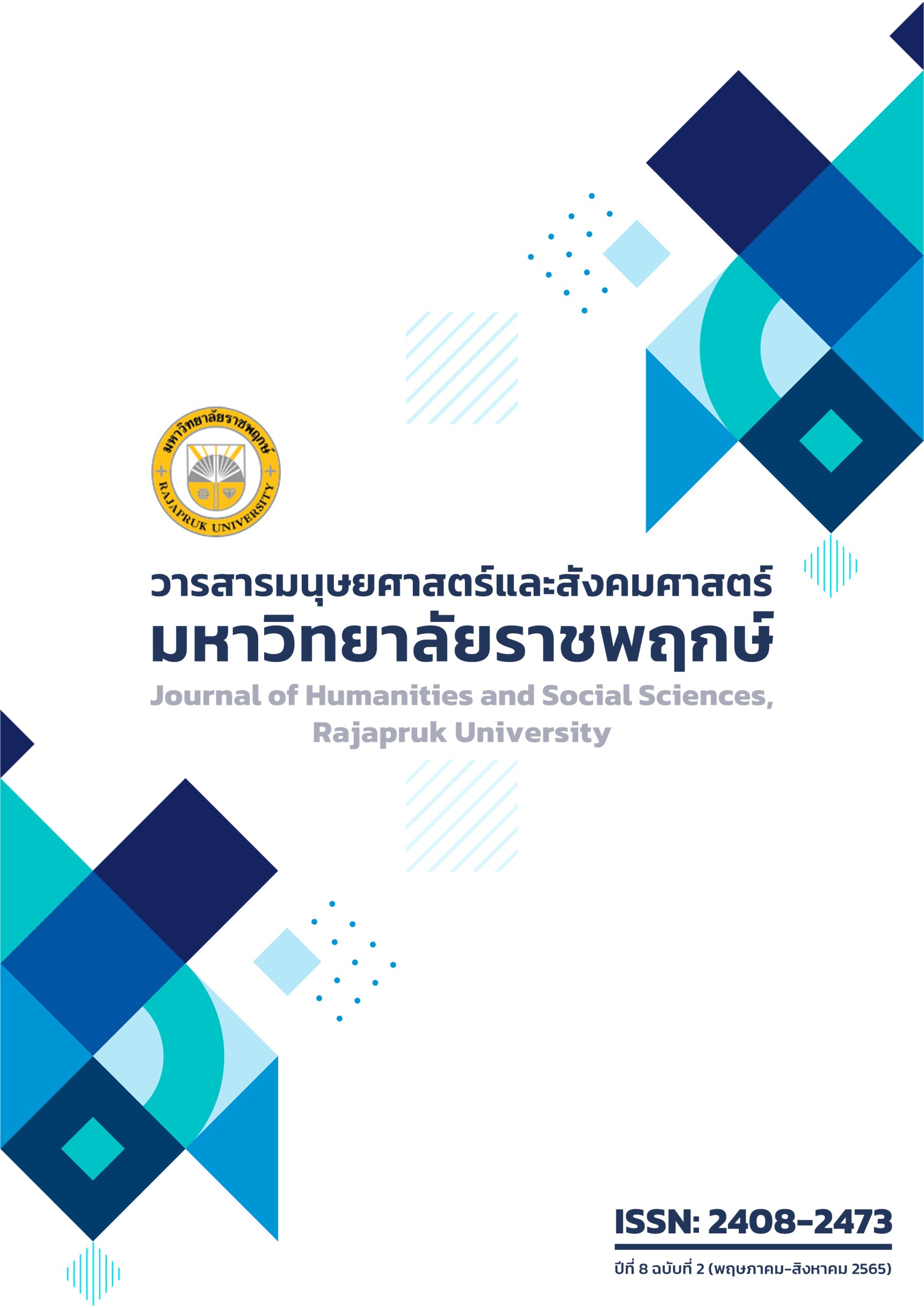ปัจจัยที่มีผลต่อการใช้งานบริการชำระเงินผ่านระบบชำระเงินแบบไร้สัมผัส
Main Article Content
บทคัดย่อ
งานวิจัยนี้มีวัตถุประสงค์เพื่อศึกษาพฤติกรรมของผู้บริโภค ปัจจัยที่มีผลต่อการชำระเงินแบบไร้สัมผัส ปัจจัยด้านประชากรศาสตร์ที่มีผลต่อความตั้งใจในการใช้งาน หาความสัมพันธ์ระหว่างปัจจัยต่าง ๆ เก็บข้อมูลโดยใช้แบบสอบถามออนไลน์จากประชาชนในกรุงเทพมหานครและปริมณฑล จำนวน 463 ตัวอย่าง ระหว่าง ธันวาคม 2563 ถึง กุมภาพันธ์ 2564 สถิติที่ใช้ได้แก่ ค่าความถี่ ร้อยละ ค่าเฉลี่ย ส่วนเบี่ยงเบนมาตรฐาน การวิเคราะห์ Independent Sample t-test, F-test (One Way ANOVA), Least Significant Difference (LSD) และ Multiple Linear Regression
ผู้ตอบแบบสอบถามเพศชายและเพศหญิงมีจำนวนใกล้เคียงกัน อายุ 41-50 ปี โสด ศึกษาระดับปริญญาตรี เป็นพนักงานบริษัท มีรายได้ 15,001-30,000 บาท/เดือน พบว่าเคยใช้บริการชำระเงินแบบไร้สัมผัส ผ่านบัตรเครดิตสัปดาห์ละ 1-3 ครั้ง ชำระเงินครั้งละ 501–1,000 บาท ที่ซูเปอร์มาร์เก็ต ใช้เพราะสะดวกรวดเร็ว สนใจการให้เงินคืนและส่วนลด มีพนักงานธนาคาร ร้านค้า แคชเชียร์เป็นผู้แนะนำให้รู้จัก
ผลการวิจัย พบว่า กลุ่มตัวอย่างมีความเห็นด้วยอย่างยิ่งว่า ความคาดหวังในประสิทธิภาพ และความคาดหวังในความพยายาม มีผลต่อการชำระเงินแบบไร้สัมผัส ส่วนมูลค่าราคา สภาพสิ่งอำนวยความสะดวกในการใช้งาน อิทธิพลทางสังคม ความไว้วางใจ ความเคยชิน แรงจูงใจด้านความชอบ และการรับรู้ความเสี่ยง มีผลตามลำดับจากมากไปน้อย จากการทดสอบสมมติฐานพบว่า อายุ ระดับการศึกษา อาชีพ และรายได้เฉลี่ยต่อเดือนที่แตกต่างกัน มีผลต่อการใช้ระบบชำระเงินแบบไร้สัมผัสอย่างมีนัยสำคัญที่ระดับ .05 และการหาความสัมพันธ์ระหว่างปัจจัย พบว่า ความพึงพอใจ มูลค่าราคา และความเคยชิน มีความสัมพันธ์เชิงบวกกับความตั้งใจอย่างต่อเนื่องในการใช้งานบริการชำระเงินผ่านระบบชำระเงินแบบไร้สัมผัส
Article Details
เอกสารอ้างอิง
กัลยา วานิชย์บัญชา. (2542). การวิเคราะห์สถิติ: สถิติเพื่อการตัดสินใจ. ภาควิชาสถิติ คณะพาณิชยศาสตร์และการบัญชี โรงพิมพ์แห่งจุฬาลงกรณ์มหาวิทยาลัย. ค้นเมื่อวันที่ 30 มีนาคม 2564, จาก https://koha.library.tu.ac.th/bib/316048
ธนาคารแห่งประเทศไทย. (2563). Payment Data Indicators. ค้นเมื่อวันที่ 30 มีนาคม 2564,จาก https://www.bot.or.th/Thai/PaymentSystems/Publication/payment_data_indicators/Pages/default.aspx
ธนาคารแห่งประเทศไทย. (2563). รายงานระบบการชำระเงิน 2562. ค้นเมื่อวันที่ 30 มีนาคม 2564, จาก https://www.bot.or.th/Thai/PaymentSystems/Pages/default.aspx
นันทนี ลักษมีการค้า. (2561). ปัจจัยการยอมรับเทคโนโลยีต่อการเข้าสู่สังคมไร้เงินสดของประชากรเจเนอเรชัน เอ็กซ์ ขึ้นไป: กรณีศึกษาจังหวัดกรุงเทพมหานคร. การค้นคว้าอิสระ หลักสูตรบริหารธุรกิจมหาบัณฑิต คณะพานิชยศาสตร์และการบัญชี มหาวืทยาลัยธรรมศาสตร์ ปีการศึกษา 2561. ค้นเมื่อวันที่ 15 พฤศจิกายน 2564, จากhttp://ethesisarchive.library.tu.ac.th/thesis/2018/TU_2018_6002030705_9868_9827.pdf
มาสเตอร์การ์ด. (2563). มาสเตอร์การ์ดเผยผู้บริโภค 79% ทั่วโลกใช้จ่ายแบบคอนแทคเลส. ค้นเมื่อวันที่ 10 สิงหาคม 2563, จาก https://www.nationtv.tv/main/content/378775670/
Bhattacherjee, A. (2001). Understanding Information Systems Continuance: An Expectation-Confirmation Model. MIS Quarterly, 25: 351-370.
Gefen, D., E. Karahanna and D. Straub. (2003). Trust and TAM in Online Shopping: An Integrated Model. MIS Quarterly, 27: 51-90.
Hong, S., J. Y. L. Thong and K. Y. Tam. (2006). Understanding continued information technology usage behavior: A comparison of three models in the context of mobile internet. Decision Support Systems, 42(3): 1819-1834.
Hsiao, C.-H., J.-J. Chang and K.-Y. Tang. (2016). Exploring the influential factors in continuance usage of mobile social Apps: Satisfaction, habit, and customer value perspectives. Telematics and Informatics, 33(2): 342-355.
Hsu, C.-L. and J. C.-C. Lin. (2015). What drives purchase intention for paid mobile apps? – An expectation confirmation model with perceived value. Electronic Commerce Research and Applications, 14(1): 46-57.
Kim, C., M. Mirusmonov and I. Lee. (2010). An empirical examination of factors influencing the intention to use mobile payment. Computers in Human Behavior, 26(3): 310-322.
Lee, M.-C. (2010). Explaining and predicting users’ continuance intention toward e-learning: An extension of the expectation–confirmation model. Computers & Education, 54(2): 506-516.
Leong, L.-Y., T.-S. Hew, G. W.-H. Tan and K.-B. Ooi. (2013). Predicting the determinants of the NFC-enabled mobile credit card acceptance: A neural networks approach. Expert Systems with Applications, 40(14): 5604-5620.
Liao, H., K. Toya, D. Lepak and Y. Hong. (2009). Do They See Eye to Eye? Management and Employee Perspectives of High-Performance Work Systems and Influence Processes on Service Quality. The Journal of applied psychology, 94: 371-391.
Lin, C. S., S. Wu and R. J. Tsai. (2005). Integrating perceived playfulness into expectation- Confirmation model for web portal context. Information & Management, 42(5): 683-693.
Olorunniwo, F. and G. Udo. (2002). The impact of management and employees on cellular manufacturing implementation. International Journal of Production Economics, 76(1): 27-38.
Porter, M. E. (1980). Competitive Strategy: Techniques for Analyzing Industries and Competitors. Book.
Tam, C., D. Santos and T. Oliveira. (2020). Exploring the influential factors of continuance intention to use mobile Apps: Extending the expectation confirmation model. Information Systems Frontiers, 22(1): 243-257.
Thong, J. Y. L., S.-J. Hong and K. Y. Tam. (2006). The effects of post-adoption beliefs on the expectation-confirmation model for information technology continuance. International Journal of Human-Computer Studies, 64(9): 799-810.
Venkatesh, V., J. Thong and X. Xu. (2012). Consumer Acceptance and Use of Information Technology: Extending the Unified Theory of Acceptance and Use of Technology. MIS Quarterly, 36: 157-178.
Venkatesh, V., M. Morris, G. Davis and F. Davis. (2003). User Acceptance of Information Technology: Toward a Unified View. MIS Quarterly, 27: 425-478.
Wang, Y.-M. (2008). Determinants Affecting Consumer Adoption of Contactless Credit Card: An Empirical Study. Cyberpsychology & behavior : the impact of the Internet, multimedia and virtual reality on behavior and society, 11 6: 687-689.
Xu, C., D. Peak and V. Prybutok. (2015). A customer value, satisfaction, and loyalty perspective of mobile application recommendations. Decision Support Systems, 79: 171-183.
Zhou, T. (2013). An empirical examination of continuance intention of mobile payment services. Decision Support Systems, 54(2): 1085-1091.


